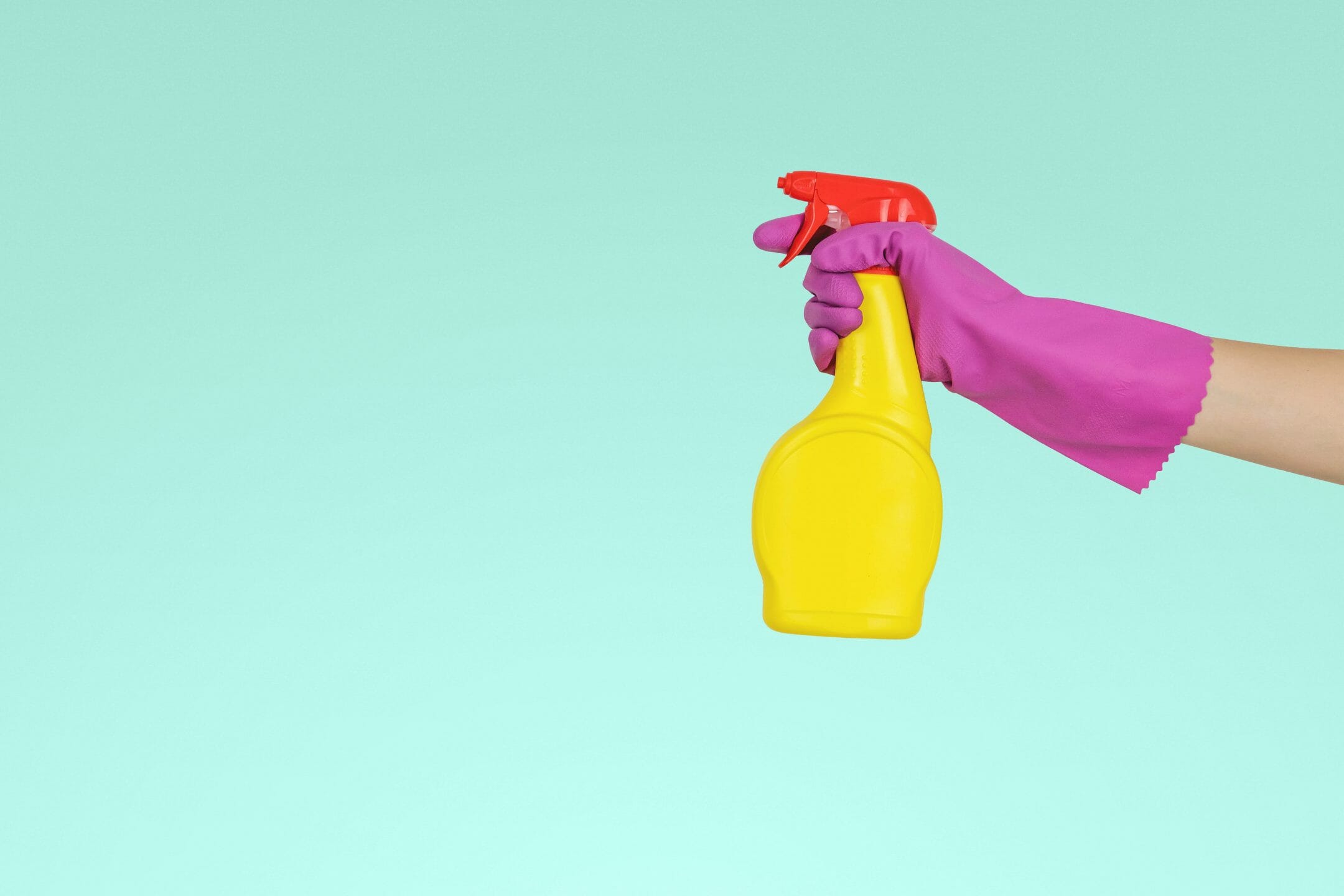The more we learn about the effects of sun exposure, the more important it is that we protect ourselves. It’s not just our bodies either. Most things benefit from sun protection. The sun will age our skin, fade furniture and upholstery, and raise indoor temperatures on hot days. Tinting our windows is a great first line of defense against those harmful rays. Whether we’re tinting our car, home, or boat windows, we do it to protect what’s inside. As such, we need to take care of the tint for it to function fully. Cleaning tinted windows is a big part of that routine maintenance.
But did you know there’s a right way and a wrong way to clean tinted windows? Some household cleaners will damage the tint. Cleaning tinted windows properly can improve their performance and extend their life. Cleaning tinted windows improperly can cause serious damage to the film. Let’s take a look at what window tint is and why choosing the right cleaner is so important.
What is Window Tint?
Most of us know what window tint looks like but not how it’s produced. There are numerous different kinds, and the type we use depends on where we’ll put it. For instance, the kind of tint we use on our office windows is different from the tint on our car windows. They are both serving the same protective purposes, but they act differently. This is because architectural windows (tinted house windows that is) are flat and automotive windows are curved. Use the wrong kind, and the tint may not set right. It may even break the glass.
Beyond the differences between architectural and automotive tint, there are multiple variations within each category. Each type provides slightly different benefits, but they’re all constructed in very similar ways. Specifically, they contain a tinting agent sandwiched in between a film and an adhesive.
Depending on what the tinting agent is, the film may reflect light or filter it out. Depending upon the amount, the window will allow more or less light through. This is why some tints appear darker than others. That adhesive film is carefully placed on the glass, and the result is a beautifully tinted window. Before making any choice, there are very good reasons for choosing one type of tint over another.
Choosing the Right Window Tint
The different types of tints we use serve a number of useful purposes. They can protect people and surfaces from sun damage, reduce temperatures, and provide privacy. Each variation will produce a specific effect. The type you choose should reflect your desired outcome.
A metallic tint will reflect a whole lot of light, But since it’s made with metallic flakes in the tint, it will also appear shiny. Not everyone wants that. You could go the opposite route and choose a dyed tint. Dye creates a dark, opaque appearance, and is very economical. On the downside, it can degrade over time and lose effectiveness. There are a lot of different types of tint, and you’ll want to research them before making your choice.
Before you choose to tint any window, you’ll also want to make sure you aren’t violating any laws. Many states have restrictions on how dark window tint can be on automobiles. Choose a quality product that’s specified for your application. That way, you can avoid any headaches caused by using the wrong tint.

Things to Know About Cleaning Tinted Windows
Cleaning tinted windows correctly will add years of longevity to your tint. It’s worth taking the time to do it right. So, what’s the best way to clean tinted windows? There are a number of good options, and once you know what you’re looking for, it’s easy to figure out. There are some basic rules to go by if you want to effectively clean tinted windows. Let’s look at how to wash tinted windows the right way.
Wait a While
Before we get into how to clean tinted windows, we need to find out if you should. If you’ve just had your windows tinted, you’ll want to wait at least a few weeks. Cleaning tinted windows before they’ve fully cured may do more harm than good, and curing can take a long time.
Some window tints will take a few weeks to cure. If the weather is particularly cool and damp, they could take up to 2 months to cure. You’ll want to refer to the product instructions for guidance on how long you should wait.
Hopefully your windows don’t get too dirty before they cure, but if they do, only light spot cleaning is recommended. If you can live with it until your window tint cures, that’s the best way to avoid doing any damage.
Ammonia-free Cleaners are Key
Before you grab the glass cleaner, read the label. A window cleaner for tinted windows requires slightly different criteria than other glass. The problem is that we’re programmed to grab the glass or window cleaner any time we go to clean windows. Most of those products contain ammonia, which is bad news for window tint. It can turn your tint purple with repeated use, and it can weaken the film, making it brittle.
Likewise, citrus-based cleaners aren’t usually recommended for cleaning tinted windows. Citrus is very acidic and can damage your window film. At the end of the day, window tint cleans up easily and shouldn’t require any harsh cleaners.
Use Distilled Water
If you’re going to make a homemade tinted window cleaner, make sure you use distilled water. That’s because many of us have hard water. If you mix your soap with hard water, you may have trouble with water spots when the windows dry. Distilled water has no minerals and won’t leave any water marks. Now that we’ve covered that, let’s look at a couple of easy recipes for making homemade window cleaner for tinted windows.
Baby Soap and Rubbing Alcohol
One popular window tint safe cleaner is made with a few drops of baby soap and two tablespoons of rubbing alcohol. Dilute the soap and rubbing alcohol in a spray bottle full of distilled water. You’ll have enough to clean all the windows on a few cars or a whole lot of home or office windows. Refill and repeat until all your windows are spotless.
Vinegar and Water
Another popular ammonia-free glass cleaner for tinted windows is equal parts vinegar and water. You can try starting with 2 cups white vinegar and 2 cups of distilled water. White vinegar is a disinfectant and a deodorant, so it may be a good option if the soil smells particularly funky.
Not all people agree with using vinegar on tinted windows, due to its acidity, however. If you’re worried it might affect your tint, make sure the vinegar is well diluted. If you’re still on the fence, skip this recipe and try another.
Dish Soap Diluted in Distilled Water
If you want to go extra gentle with your cleaner, try dish soap and water. If you’ve got tough, greasy fingerprints to get off, a little dish soap diluted in water is usually effective. You don’t need much, only enough to cut the grease. Just make sure to rinse it well and remove any soap residue when you wipe it dry.
Use Multiple Microfiber Cloths
The cloth is almost as important as the cleaning solution when it comes to tinted windows. It’s important that your cleaning cloth isn’t abrasive at all. Cleaning tinted windows with paper towels or rough cloths can cause small abrasions. Those abrasions can affect both the appearance and structural integrity of window tint. Your best bet is to go with microfiber cloths or some other soft, absorbent material.
Once you’ve chosen a soft cloth to clean with, make sure you have a few on hand. That will guarantee you get a streak-free clean. One cloth may not soak up all the solution, so hitting windows with a fresh cloth afterward is always helpful.
Before Cleaning Tinted Windows Test on a Small Patch First
Before you spray the whole window, test a small patch in an inconspicuous location first. That way you won’t run the risk of damaging the whole thing. It’s a good practice when trying a new cleaning solution on any material, and cleaning tinted windows is no different. When you test your solution, make sure you don’t notice any changes in the film. If you do, stop cleaning and dry it thoroughly.
Protect Your Tinted Windows from the Sun
Aside from simply washing tinted windows correctly, there is another great way to add longevity to the tint film. Protect your home windows from the sun with awnings and park your car in the shade. The less wear you can put on the tint, the more time you’ll get out of it.
Get Tinted Windows of your Own
Now that you know a bit about tinted window care, you’re ready to get the most out of this investment. Tinting your windows can significantly lower your heating and cooling costs in summer and winter. It also protects your home furnishings and vehicle’s interior from aging prematurely. Protecting these things protects all the money you’ve spent on them by adding longevity and increasing resale value. Just don’t forget what you’ve learned about keeping them clean. Properly cleaning tinted windows regularly allows them to function at their best for a long time.

